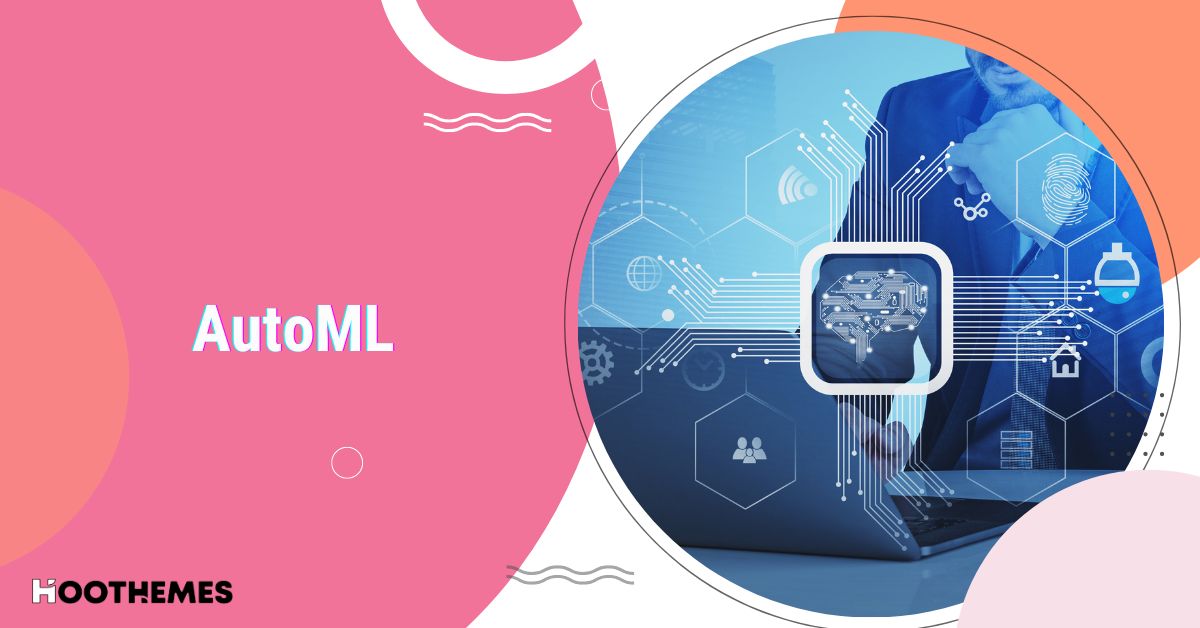Automation and autoML are the kings of modern technologies. Most business tasks are subject to automation in one way or another. This is especially true for routine and repetitive processes. Not every team will be happy to complete the same tedious but unavoidable tasks that don’t make much sense for business development every day.
In theory, this is what autoML should help with: All the monotonous tasks related to machine learning should become so automated that AI would become available even to non-experts who have no direct relation to it. Sounds like almost a “no-code” approach. And for ML teams and providers of AI development services, such automation improves productivity and makes the development process faster.
It’s 2025. Can modern autoML provide users with no-code features? Or is it still more of a marketing move? We’ll figure it out in this article.
What Is autoML?
AutoML, or automated machine learning, includes tools and frameworks that automate parts of the machine learning process. This covers things like model selection, data preprocessing, and performance evaluation. Usually, these tasks are managed by machine learning engineers or data scientists.
What is the final goal of autoML? This type of automation is meant to lower the tech barriers to creating and releasing ML models. It will allow users with limited coding/data science experience to create functional models with less effort.
Also, autoML can come in handy for data science teams. Automation will increase the productivity of the team since they will be able to focus on more high-level tasks without wasting time on routines. It will also reduce the amount of time a team needs to develop and deploy the model.
The Difference Between Traditional and Automated Machine Learning
While both methods are meant to build models from data, the way they approach the process (and the skills they require) differ a lot.
In traditional ML workflows, building a model is a manual, iterative, and highly technical process. It typically involves a team of data professionals who handle each stage, including:
- Data cleaning and preparation (identifying missing values and feature engineering)
- Algorithm selection (choosing the most fitting model for the problem)
- Hyperparameter tuning (adjusting internal settings of the model)
- Model evaluation (testing and comparing models)
- Deployment and monitoring (integrating ML into a production system)
With this approach, you’ll get maximum flexibility and control, but it requires time, technical expertise, and resources.
AutoML platforms automate many of the above steps. It reduces the need for deep technical involvement. While different tools offer different levels of automation, most AutoML platforms can:
- Automatically clean and transform data
- Check multiple models and select the best-performing one
- Tune hyperparameters
- Generate performance reports
Some platforms also assist with model deployment and ongoing monitoring, so the integration becomes easy and smooth.
Is AutoML Truly No-code in 2025?
In the early days, autoML was not as capable as it is now. Early platforms were difficult to use without some tech background, and many were limited to narrow use cases like basic classification or regression tasks.
Fast forward to today, and the landscape has changed. Now, AutoML platforms are more mature, more versatile, and far more accessible. But has the “no-code” promise been fully realized? The answer depends on how you define “no-code” and what you expect from it. For straightforward use cases, autoML is often enough. But for more complex problems, custom machine learning development services still play a critical role.
There are several improvements that we can definitely pinpoint when it comes to autoML:
- Better user interfaces: Modern platforms offer more intuitive workflows. Users are walked through each step, from dataset upload to model deployment, with contextual help, visualizations, and error handling.
- Expanded data support: While early tools focused mostly on structured data, today’s platforms support text, images, and even audio.
- Integration with LLMs and genAI: Some platforms now incorporate large language models to assist users in interpreting data and generating model documentation.
- End-to-end automation: In many cases, platforms now offer full ML pipelines without requiring users to write any code.
- Explainability and compliance: As demand grows for model transparency, autoML platforms now include built-in model explainability tools and audit logs.
So, with all that in mind, is autoML really no-code now?
The short answer: AutoML in 2025 is closer than ever to being no-code, but not universally, and not entirely.
Why? Basic tasks can for sure be completed by non-technical users using a graphical interface. However, tasks like preparing messy datasets and understanding the limitations of model outputs still require some technical knowledge or support from IT teams.
In other words, the tools may be no-code, but the context in which they’re used often isn’t.
Rather than asking whether AutoML is truly no-code, a more useful framing might be: Has it become more accessible and more practical for non-specialists to use effectively?
And in that regard, the answer is yes.
Business analysts, product managers, and operations teams can now do things that once required a dedicated data science team, like quickly testing hypotheses or building prototypes, often using behavioral analytics tools to better understand user actions and trends. For more complex or high-stakes use cases, domain expertise, data literacy, and occasionally some coding skills are still important.
What Does This Mean for Your Business?
The progress of autoML is changing the way businesses approach machine learning. Thanks to more accessible interfaces, you can now explore machine learning without building a full data science team. It’s useful for rapid prototyping and cost-effective innovation.
While AutoML lowers the need for coding, it raises the need for data literacy. Businesses that succeed with AutoML typically have people who understand what data is needed, what the model is predicting, and how to interpret the output responsibly. This creates a growing demand for hybrid roles like analysts, product managers, and operations leads who can think critically about data, even if they don’t code.
With barriers coming down, more teams can leverage ML. For example, marketing can segment audiences or personalize campaigns, and operations can optimize resource allocation. However, despite automation, human oversight is still essential. You should think about data quality, regulations, and ethical considerations.
To Sum It Up
Modern autoML is a very useful business tool that can help your organization develop an AI solution. Do you still need technical expertise? Yes, at least some of it. But autoML still continues to lower the barriers and make AI more accessible to any business. For companies that have been waiting on the sidelines, now may be the right time to take a second look.
FAQs
Q1. Is AutoML Deprecated?
No, AutoML is not deprecated. In fact, it continues to evolve rapidly and gain adoption across industries. Rather than being outdated, AutoML is increasingly integrated into broader AI and machine learning ecosystems.
Q2. What Is the Difference Between ML and AutoML?
Traditional machine learning (ML) requires manual involvement in tasks like data cleaning, model selection, and tuning by skilled professionals. AutoML automates many of these repetitive steps, making it easier and faster to build models, especially for users with less technical expertise.
Q3. What Is the Difference Between MLOps and AutoML?
AutoML focuses on automating the creation and tuning of machine learning models. MLOps (Machine Learning Operations) covers the broader process of deploying, monitoring, maintaining, and managing ML models in production environments. MLOps ensures models run smoothly at scale, while AutoML helps build those models.

